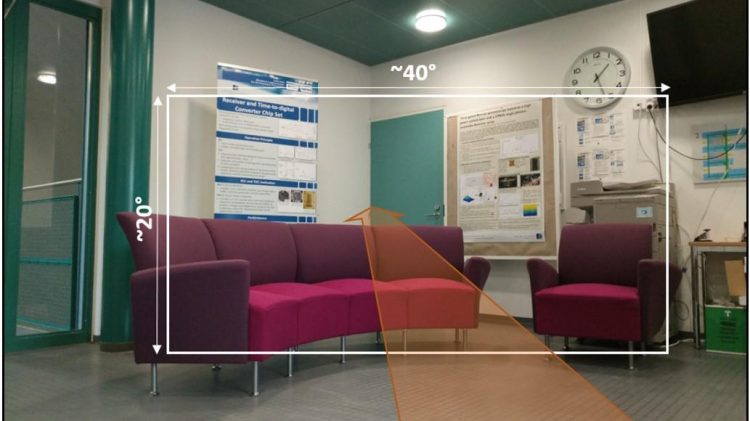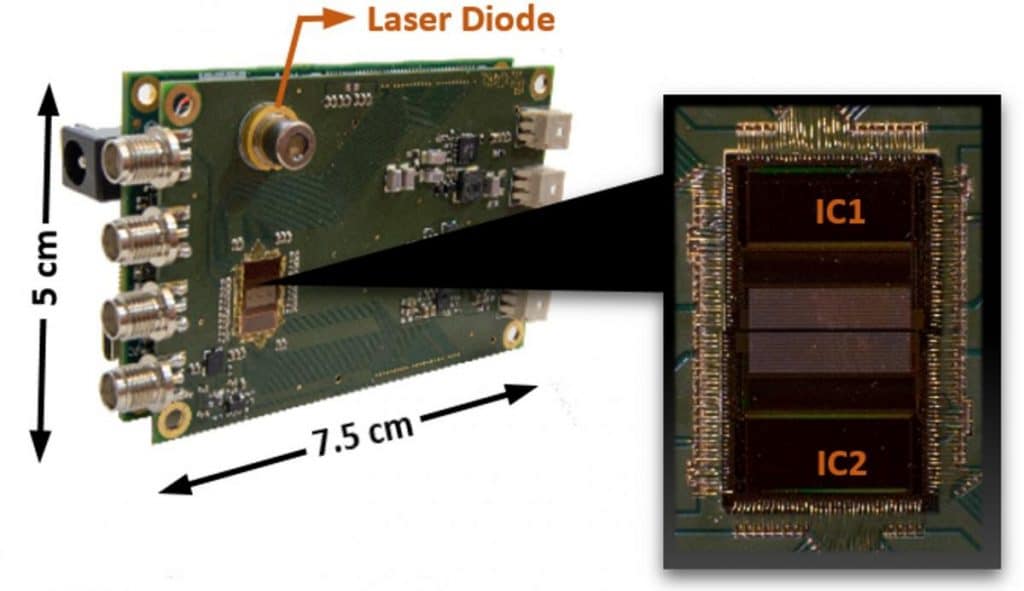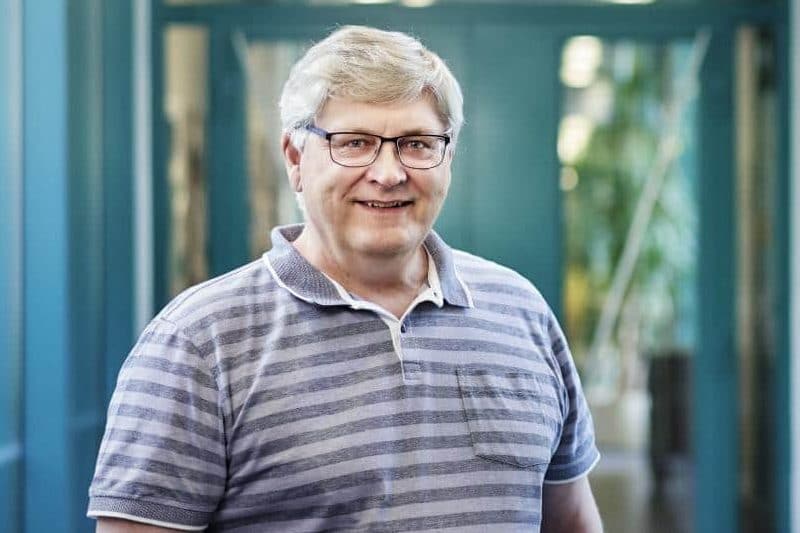
Solid-state 3-D range imager technology in full operation
Professor Juha Kostamovaara’s research group faces unique challenges daily as it strives for meaningful results in its research field of multi-disciplinary character. Quite seldom, deep knowledge on devices, microelectronics, photonics and laser ranging can be simultaneously found within a single research group, Kostamovaara notes.
“We want to develop a miniaturized (matchbox-size), low power and low cost solid-state sensor technology which can produce 2-D (line profiles) or 3-D range images about the environment of the sensor, depending on the needs of the particular application,” Kostamovaara says.

The need for these kinds of sensors is increasing rapidly in many application fields, e.g. in vehicular applications, robotics, security and many other fields. On the other hand, in spite of very active research both in academia and industries, convincing solid-state (without mechanically moving parts) demonstrators are still largely missing. “Thus, this task has turned out to be a very challenging one,” Kostamovaara says. “On the other hand, our approach seems to have great potential for a generic solution for this field.”
The group aims at an end-to-end solution based on innovative building blocks. “One part of our work is the development of novel optoelectronic devices, e.g. laser diodes, capable of producing high-energy “impulse-like” optical pulses, which are essential in our range imagers,” Kostamovaara says. “Another important part of the work is the development of CMOS integrated circuits, which include on the same circuit die optical detector arrays, which are capable of detecting simultaneously single photon events, and also the electronics to record their time position with respect to the emitted laser pulse. In addition, we are developing prototypes to demonstrate the developed system architectures in real-world applications, together with our research partners.”

The most potential application areas for the developed technology are driver assistance systems (even driverless cars) and, especially, the control and guidance of machines (autonomous machines), e.g. in civil engineering, farming and forestry. The main performance evaluation criteria arise from the anticipated applications, e.g. measurement range, spatial resolution, measurement rate and precision. On top of these technological parameters, the cost of the technology, power consumption and size are important system parameters, especially in mass-production. Kostamovaara refers to the recently ended six-year Center of Excellence programme on Laser Scanning Research, in which his group participated. “Within this program we proposed to develop new kind of single photon detection based 2-D and 3-D laser range imaging technologies,” Kostamovaara says. “As a result of the activity, we were able to develop these technologies starting from the scratch up to the point of demonstrating fully operating 2-D and 3-D range imager prototypes.”
The group’s long-term work on Laser Scanning Research resulted both in technical results and publications in the leading journals of the field, including JSSC. Another important outcome of the long-term research activity was the education of several doctoral students. “They have trained themselves into the important fields of photonics and microelectronics and are spreading their knowledge into industries already now,” Kostamovaara says. One of the specific design challenges Kostamovaara’s group tackles next is the development of a specific type of block-based laser illuminator technology enabling the considerable improvement of the range imaging measurement speed.
New industrial activities utilising the proposed ideas and developments are most welcome. “Our role in this research road map is to develop the basic technologies which pave the way for further R&D in industries,” Kostamovaara says. “We hope that our technology finds its way to industrial R&D and eventually to applications.”